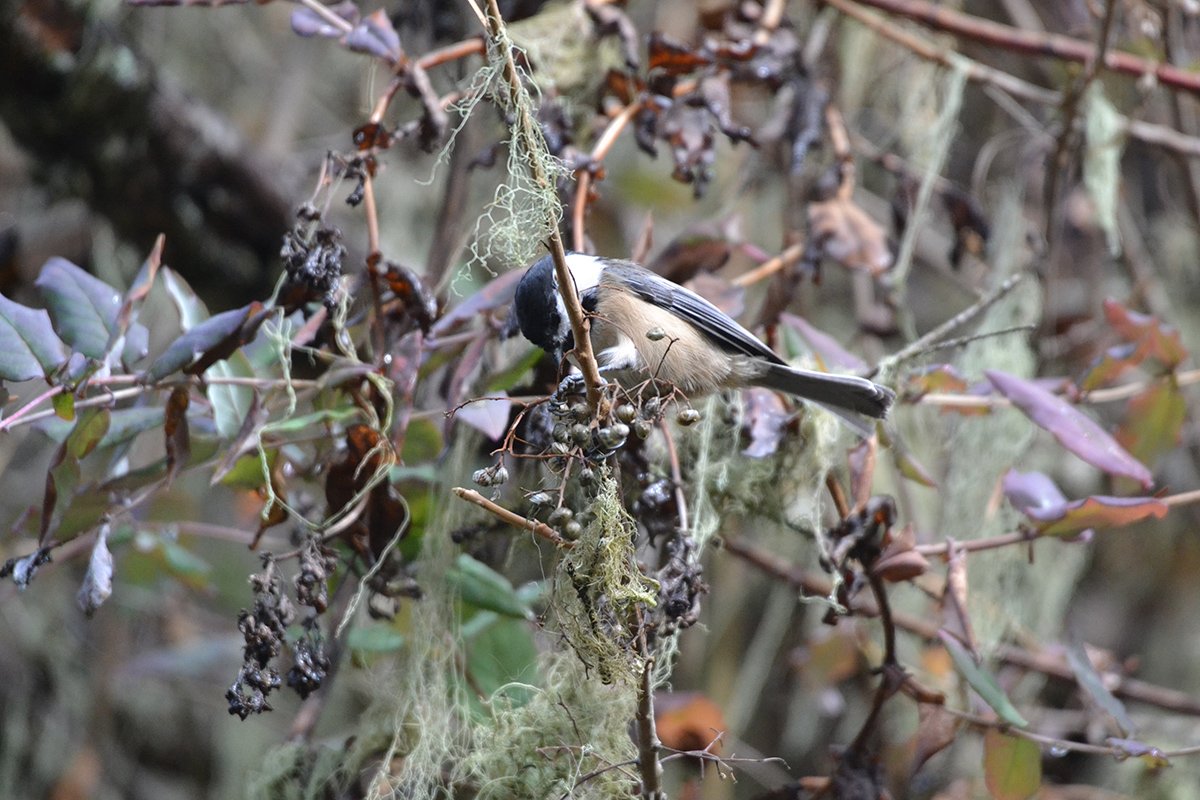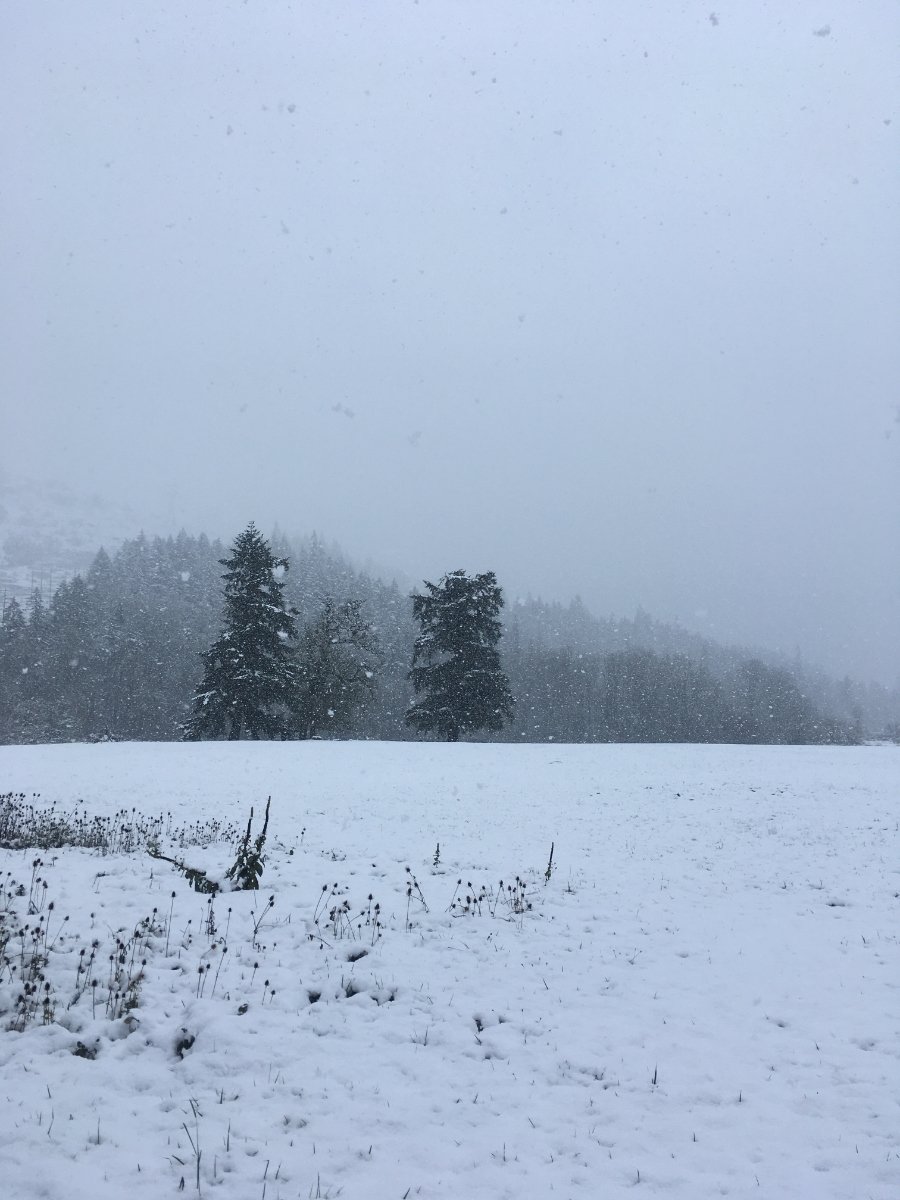Lately, we have been stuck in a beautiful blanket of fog. Here’s a snippet of information about fog from The Audubon Society Field Guide to North American Weather:
“Stable air develops when the atmosphere becomes stratified, with a layer of warm air overlying a layer of cold air. Along the meeting line, a thin cloud will form; it may thicken into a solid layer of the stratus type. This arrangement creates an inversion, so called because it is the opposite of the more typical situation, in which cold air lies above warm air. In an inversion, the warm air puts a ‘lid’ on the lower atmosphere, and convection cannot take place. If the layered air at the earth’s surface is cooled enough overnight, fog may occur. The fog, which is actually a cloud on the ground, will persist until the rising sun warms the air to above the condensation point and the fog evaporates.”
The weather is fascinating.



























































